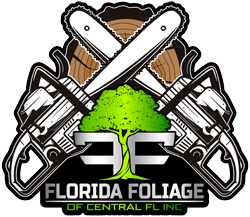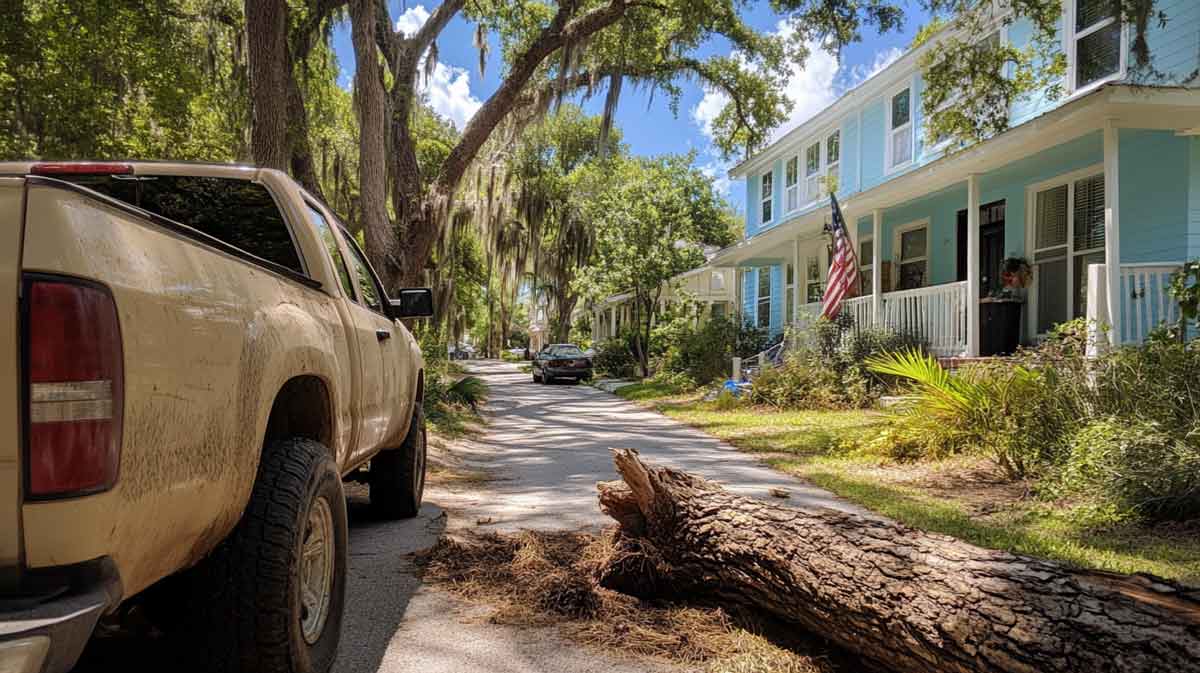Understanding Daytona Beach’s Storm Risks
Daytona Beach, FL, lies in a region that is all too familiar with the challenges posed by storm season, particularly during the Atlantic hurricane season, which stretches from June to November each year. Due to its location along the Atlantic coast, the area is highly susceptible to the threat of tropical storms and hurricanes. These natural weather events can wreak havoc on both manmade structures and the environment, causing extensive damage to homes, infrastructure, and natural landscapes like trees. The combination of high winds, torrential rain, and occasional storm surge creates a perfect storm of hazards, with trees being particularly vulnerable. The high winds can snap branches and uproot large trees, while heavy rain can saturate the ground, weakening root systems and increasing the risk of toppling trees. For residents and property owners in Daytona Beach, understanding these risks is critical—not only to protect trees but also to ensure the safety of homes, vehicles, and the people living in their surroundings.
Preparation plays a pivotal role in reducing the damage that storms can inflict on trees and landscaping. Regular tree care and maintenance should be a priority for all property owners, especially those living in areas prone to hurricanes. Having trees assessed periodically by professionals can help identify potential weaknesses that might turn into serious hazards during storms. Tree assessments typically involve examining the overall health of the tree, including checking for signs of disease, pest infestations, or structural damage, such as leaning trunks, brittle limbs, or cracks in branches. Catching these issues early can mean the difference between safeguarding your trees and dealing with potentially dangerous situations during high winds.
Another critical step is understanding the characteristics and vulnerabilities of various tree species in Florida, as not all trees withstand storms equally. Some local species are naturally more resistant to hurricane conditions due to their deep root systems and flexible canopies, but others may be more prone to snapping, splitting, or falling. For instance, shallow-rooted trees can easily be uprooted by strong winds, and certain species with brittle wood are more likely to break under stress. Knowing which trees are resilient and which might need proactive care or even removal can significantly reduce the overall risk of tree failure during a storm.
Since storms are often unpredictable and can intensify or change paths at the last minute, property owners should adopt both preventative and contingency measures. Proactive measures include pruning trees regularly to remove weak or overhanging branches, ensuring proper clearance from powerlines and structures, and even cabling or bracing trees where necessary to provide additional support. Beyond these preventative steps, emergency response plans should also be put into place to address damage as it occurs. Such plans should include having access to professional resources and contractors who can assist with debris cleanup or emergency tree removal after a storm.
Working with a dedicated tree care service, like Florida Foliage of Central Florida, can make the entire process of preparation, storm mitigation, and recovery far more manageable. These experts bring not only technical knowledge but also a deep understanding of the unique challenges that come with Florida’s hurricane-prone environment. With their help, property owners can identify risks, take steps to prune or remove hazardous trees, and protect the structural integrity of healthy trees that enhance the landscape. Hiring a local professional ensures that every action taken considers the region’s unique climate, soil conditions, and tree species, all of which play a role in how trees respond to storm conditions.
Ultimately, whether you’re a homeowner, business owner, or caretaker of community spaces, preparation is the best defense against the destructive forces of Mother Nature. By prioritizing regular tree care, addressing vulnerabilities before storms hit, and working with knowledgeable professionals, you can protect not only the trees that enrich your property but also the people and structures that depend on them for shade, security, and beauty. In a place like Daytona Beach, where hurricanes are a familiar and often unavoidable reality, being proactive in storm preparation should be a top priority for anyone who values safety and resilience.
Assessing Tree Health and Structure
Regular assessment of tree health and structure is fundamental in preparing for storms, especially in a storm-prone area like Daytona Beach, FL. A professional evaluation can help identify potential risks by examining the overall health, growth patterns, and structural integrity of trees. This includes checking for dead or diseased wood, which can be a significant hazard in high winds, as well as assessing the root system for signs of instability. Healthy trees are naturally more resilient to storm damage, making routine health assessments a wise investment for property owners.
The structural integrity of a tree is just as important as its health when considering storm readiness. This involves evaluating the tree’s branching pattern, trunk condition, and root stability. Trees with multiple trunks or those that have grown in close proximity to buildings or other trees may require special attention. A trained arborist can use their expertise to determine if cabling, bracing, or other reinforcement measures are necessary to support weak limbs or trunks. Early detection and correction of structural issues can prevent larger problems during severe weather events.
Proper assessment of tree health and structure is not a one-time task but an ongoing process that should be integrated into regular property maintenance routines. By staying vigilant and conducting periodic evaluations, property owners can ensure their trees remain strong and resistant to storm damage. Florida Foliage of Central Florida offers specialized services to assist with these assessments, providing professional advice and solutions tailored to the unique needs of each tree and property. Their commitment to excellence ensures that your trees are not only ready to withstand storms but also continue to thrive in the long term.
Pruning Techniques for Storm Resilience in Daytona Beach, FL
Pruning is one of the most effective techniques for enhancing the storm resilience of trees, particularly in a region like Daytona Beach, FL. Proper pruning involves the strategic removal of dead, diseased, or overgrown branches to improve the tree’s overall structure and stability. This not only reduces the risk of branches breaking during high winds but also promotes healthier growth by allowing more sunlight and air to penetrate the canopy. Effective pruning can significantly decrease the likelihood of storm-related tree damage, making it an essential part of storm preparation.
Different pruning techniques can be employed depending on the specific needs of a tree. For instance, crown thinning involves selectively removing branches to reduce the density of the tree’s canopy, which helps decrease wind resistance during storms. Crown reduction, on the other hand, involves shortening the height of the tree, which can be beneficial for trees that are too tall or top-heavy. Each technique requires a deep understanding of tree biology and growth patterns to ensure that pruning enhances rather than harms the tree’s health and structure.
Engaging a professional tree service, such as Florida Foliage of Central Florida, ensures that pruning is performed safely and effectively. Their experienced team uses industry-leading techniques and equipment to achieve optimal results while preserving the natural beauty and health of your trees. By investing in professional pruning services, property owners in Daytona Beach can significantly enhance the resilience of their trees, reducing the risk of damage during storms and extending the lifespan of their outdoor assets.
Emergency Preparedness for Tree Safety in Daytona Beach, FL
Emergency preparedness plays a vital role in ensuring storm readiness, particularly in areas like Daytona Beach, FL, where hurricanes and severe weather are a recurring concern. A significant aspect of this readiness involves tree safety—an often-overlooked yet critical component that can have a profound impact on property protection and public safety during storms. Developing a comprehensive emergency plan is essential to help property owners respond promptly and appropriately to tree-related hazards, reducing the risk of injury or property damage. Such a plan means not only preparing for potential damage before a storm but also knowing how to act during and after the event.
One of the foundational steps in preparing for storms involves understanding the potential risks that trees pose to your property and the surrounding community. This includes identifying weak, diseased, or overgrown trees that may become hazardous in high winds. Proactively scheduling regular tree maintenance, such as trimming and pruning, can minimize the chances of branches breaking or whole trees toppling during a storm. Partnering with a trusted tree service provider, like Florida Foliage of Central Florida, ensures that both proactive maintenance and emergency assistance are readily available when needed.
During a storm, swift action is often necessary to address immediate tree-related emergencies. This could involve handling trees that are leaning dangerously, clearing broken branches that may have fallen onto structures, or removing debris obstructing roadways, driveways, and access points for emergency services. In many cases, downed trees also threaten power lines, creating a serious safety hazard that requires professional intervention. Property owners should familiarize themselves with basic safety measures to avoid putting themselves or others at unnecessary risk. For example, they should never attempt to remove large branches or trees on their own, as this can lead to further property damage or personal injury. Instead, it is crucial to know when to call in expert help to handle the situation safely and efficiently.
Preparedness also includes gathering essential supplies and tools that may be needed post-storm, such as personal protective equipment (PPE) like gloves, goggles, and sturdy footwear. These can be useful in dealing with smaller debris or assessing damage in the immediate aftermath of the storm. However, for major damage requiring heavy equipment, professional tree care services are indispensable.
Equally important is the post-storm assessment process, which provides an opportunity to address any previously unnoticed damage to trees and make informed decisions about their care. After the storm has passed and conditions have stabilized, property owners should inspect their trees for signs of instability, such as uprooted or cracked trunks, broken branches lodged in the canopy, or leaning trees. Depending on the extent of the damage, trees may require further intervention, including corrective pruning, cabling or bracing to provide support, or complete removal if the damage is too severe to safely repair. Ignoring these issues can lead to future hazards, particularly during subsequent storms.
By collaborating with experienced professionals, property owners benefit from specialized knowledge and expertise in both storm preparedness and recovery. Tree care experts understand the unique environmental conditions and weather patterns of areas like Daytona Beach, enabling them to offer tailored solutions that keep properties safer throughout Florida’s often unpredictable storm season. Aside from ensuring structural safety, regular tree care also promotes tree health, helping them to grow stronger and more resilient against high winds in the future.
Emergency preparedness for storm events requires more than just a reactive approach—it requires planning ahead, investing in regular maintenance, and connecting with qualified tree care experts to address any risks effectively. By taking these steps, property owners in Daytona Beach can safeguard their homes, families, and communities, reducing the potentially devastating impact of violent storms.

